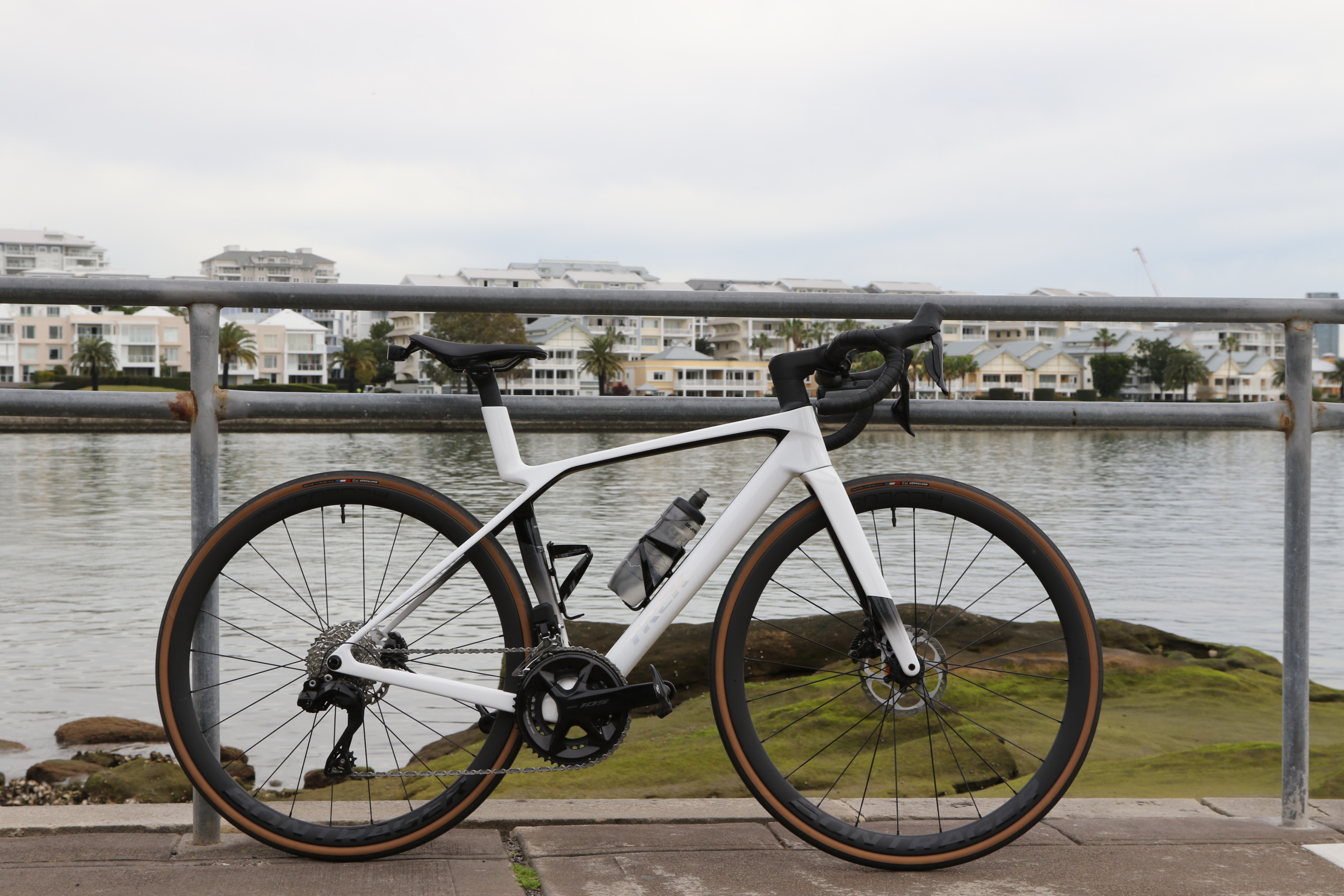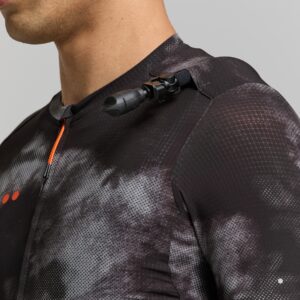Big brands like Trek are known for their high-end bikes ridden by pros like Mads Pedersen, but our editor discovered that Trek can be affordable.
Trek is a popular road bike brand, and the Madone SL6 means many can afford a sleek carbon machine for an asking price of $5,999. Of course, it’s not as fast and light as its more expensive cousins, but you’re getting a lot of product development and quality for that money.
My usual road bike is a much higher-specced race-style road bike from one of Trek’s key rivals, so it would be unfair to compare them directly, but the Madone SL6 gave it a run for its money.
In short, the Madone SL 6 Gen 8 is an aero carbon road bike that brings elite racing tech to a lower price point. It offers aero benefits similar to those of the pricier Madone SLR Gen 8, but with a more economical carbon frame and a two-piece cockpit with hidden cable routing. The inclusion of the Shimano 105 Di2 electronic groupset keeps the price down without sacrificing electronic shifting. Plus, it’s complemented with Bontrager carbon wheels.
Trek describes the bike as lightweight, although I weighed it at 8.9kg with pedals, two drink cages, and a light mount, which I wouldn’t call light. However, it’s not a criticism; you simply get what you pay for, and the more you pay for road bikes, the lighter they become.

First impressions
The Madone SL6 is a good-looking machine. Although the white colourway isn’t quite my thing (I’m a bit obsessed with the colour red!), it is not unattractive and has a few nice tweaks, like the silver decal for the Trek name and some black parts with a faded effect. I believe it is also available in black and, in some markets, my preferred red.
Some would say it’s more important how it rides than how it looks, and I suppose it is a key factor. I’m pleased to report that riding is smooth and fast, with a distinct snappy feel, particularly when riding downhill or on level ground. It corners well and, thanks to the generous gearing, is a great climber too.
When the Madone was relaunched a couple of years ago, they ‘merged’ their race bike, the Madone, with their climbing bike, the Emonda. While I didn’t ride the earlier models, I think the current model handles both tasks well.
Frame & geometry
The frame includes Trek’s distinctive ISOFLOW seat tube, which looks like a piece has been removed. I recall when I first saw this design, I thought it was a bit ungainly, but it’s grown on me, and I now think it looks more cutting edge and modern, rather than ugly. This design serves two purposes: aerodynamic gains and comfort. For my riding style, aerodynamic gain isn’t a big selling point, but comfort certainly is, and I found it comfortable to ride, even over rough surfaces.
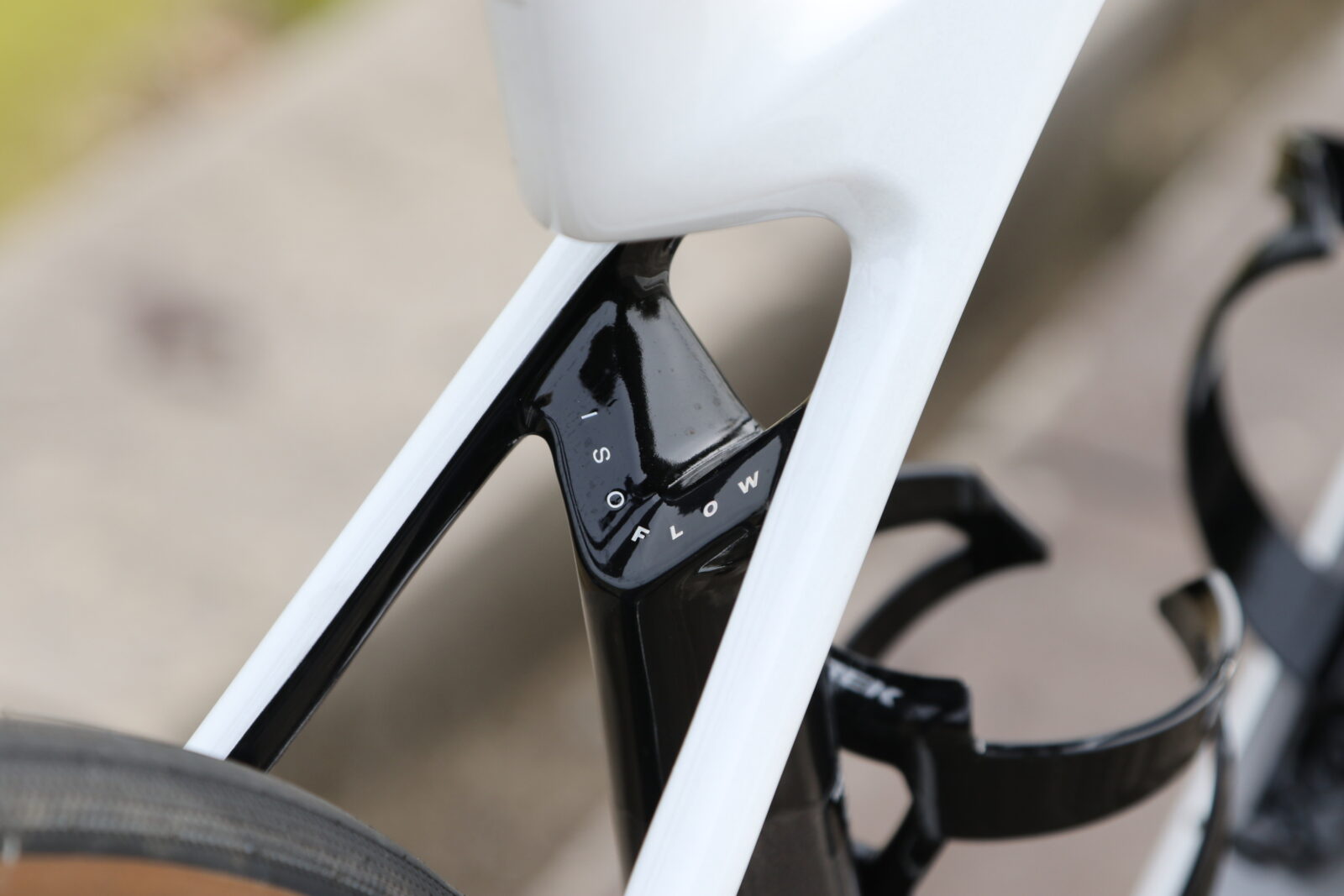
Overall, the Trek Madone Gen 8 geometry is focused on speed and aerodynamics, putting riders in a more aggressive and forward position than endurance-style bikes like Trek’s Domane. This means the head tube angle is steeper, the bottom bracket drop is shallower, and the stack height is lower, all contributing to a more aerodynamic profile. Whether you prefer this style of race geometry or endurance geometry is a personal choice, and it also comes down to flexibility, what type of riding you predominantly do, and other factors.
In addition to the special seat tube cutout, the frame’s aero tube shapes, called ‘Full System Foil,’ are designed to optimise the aerodynamics of the whole bike and look good. Trek says this more economical 500 Series OCLV Carbon frame and new tube shaping shave weight off the overall frame.
And even though you’re paying a lot less for this model than the Trek Madone models you see Mads Pedersen or Elisa Balsamo aboard, you still benefit from the research and development that goes into the higher-end Madone frames.
Wheels & components
The Madone SL6 is equipped with the latest Shimano 105 Di2, a relatively new groupset that has benefited from the shared Di2 platform inherited from Dura-Ace and Ultegra. I’ve been a Di2 convert for many years and found this latest version to be smooth and responsive. It was quieter than my old model Ultegra Di2 and changed just as efficiently.
I rode a small size equipped with the Shimano 105 R7100 crankset, 50/34 chainrings, and 165mm cranks. Both felt like the right size and ratio for this size bike. On the rear was the 12-speed 11-34 cassette, which was great for hill climbing, and the rear derailleur can accommodate up to 36T.
The hydraulic disc brakes felt firm, and while I didn’t do any emergency braking or ride in the rain, I felt confident they would pull me up nicely.
You can also set up the Shimano 105 Di2 drivetrain to suit your own needs by using Shimano’s E-Tube app. You can adjust shift speed, the number of gears shifted with a single button press, and configure synchronised or semi-synchronised shifting. You can also pair the system with third-party devices like Garmin or Wahoo computers to monitor gear selection and battery status.
The wheels are Bontrager Aeolus Elite 35 carbon wheels that come set up tubeless. Apparently, this is a first in Trek performance road history. It was my first experience of tubeless, and I found it comfortable and carefree. I rode it on some fairly rough terrain and glass (not deliberately, but unavoidably), and the tubeless set-up saved me from some potential flat tyres.
The Madone Gen 8 features hoods that are narrower than the drops, so you can adjust your positioning. You’ve probably noticed this trend in the pro peloton, so you’re getting the latest look and aerodynamic advantage. I found it comfortable to ride with my hands on the hoods or the wider drops.
The cockpit is a two-piece design that has been set up to resemble the more expensive one-piece cockpits that have become a feature of higher-end bikes. Being two pieces (separate bars and stem) allows you to change components more easily and affordably. The cables fitted neatly under the stem, so the cockpit has a similar streamlined look to higher-end models.
One of the features that impressed me was the Trek Blendr stem. Blendr is an integration system for the clean-and-easy installation of lights, computers, and other accessories on the bike’s stem. For my test, I mounted my computer and front light, which was neat, tidy, and efficient. The bike comes with a compatible stem, but accessory items need to be purchased separately. Although it’s not a standard inclusion, it’s an affordable accessory that saves you mucking around with a variety of bar mounts for lights and computers.
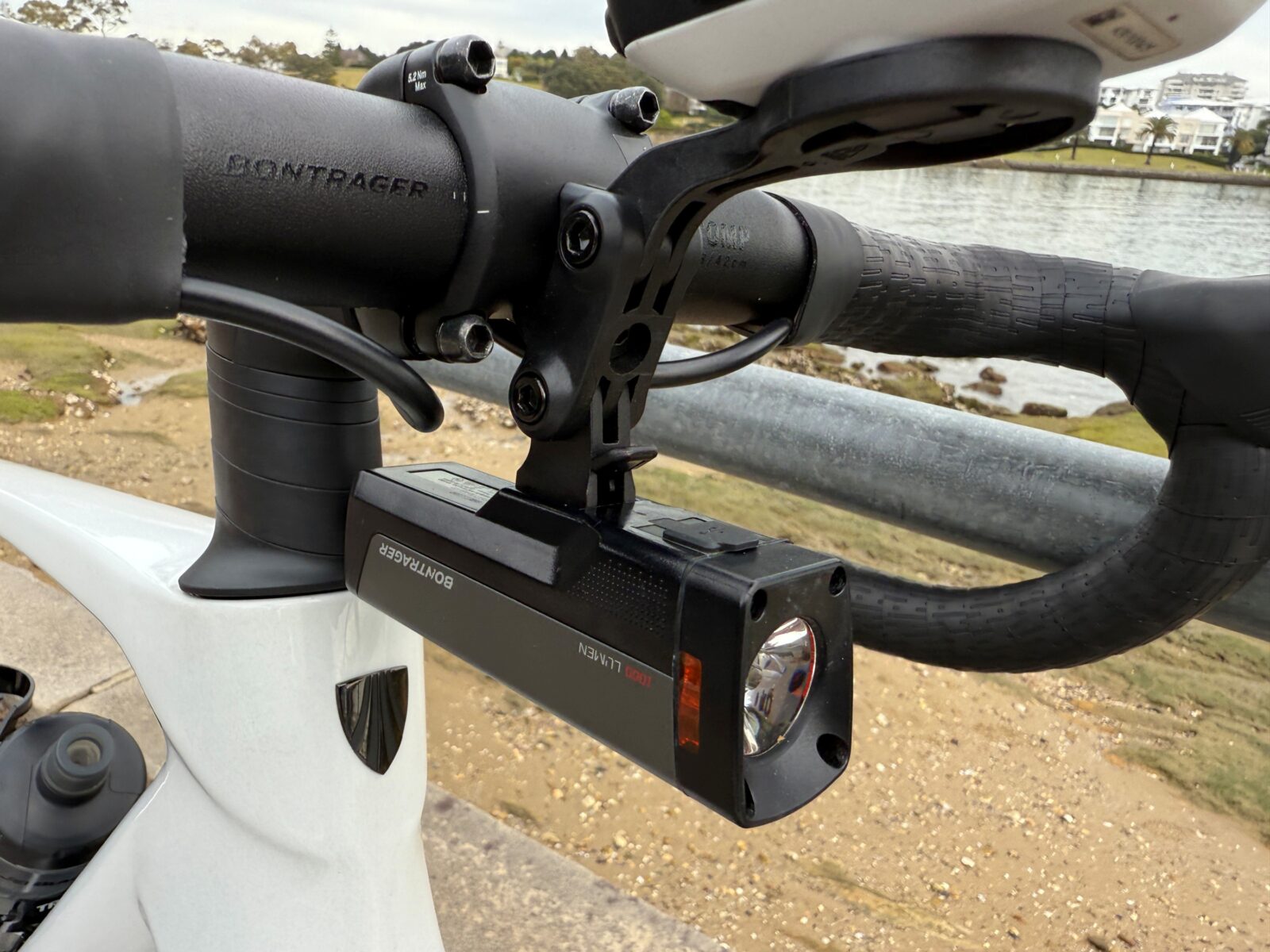
The ride
Unsurprisingly, the geometry has a race feel about it. It is similar in geometry to my usual bike, so I felt instantly at home.
It was responsive when it needed to be, on bunch rides and cornered and descended admirably. If I were to ride the bike long-term, I would have made some other changes or even had a new bike fit, but for the purposes of this review, I was pretty satisfied and comfortable. I might even upgrade a few parts to make it a bit lighter.
Summing up
The Trek Madone SL 6 Gen 8 carbon road bike is an affordable model that provides the high-tech benefits of the manufacturer’s more expensive bikes, without the high price. It would suit a keen recreational rider who wants a good all-rounder, and also a person who enjoys club racing.
It’s not the lightest in the bunch, but it is an impressive package for the price. Upgrading the wheels or other components will lighten it up, but as it comes straight out of the shop, it’s a great start. I weighed the test bike at 8.9 kg with pedals, two drink cages and light mount.
More info trekbikes.com/au
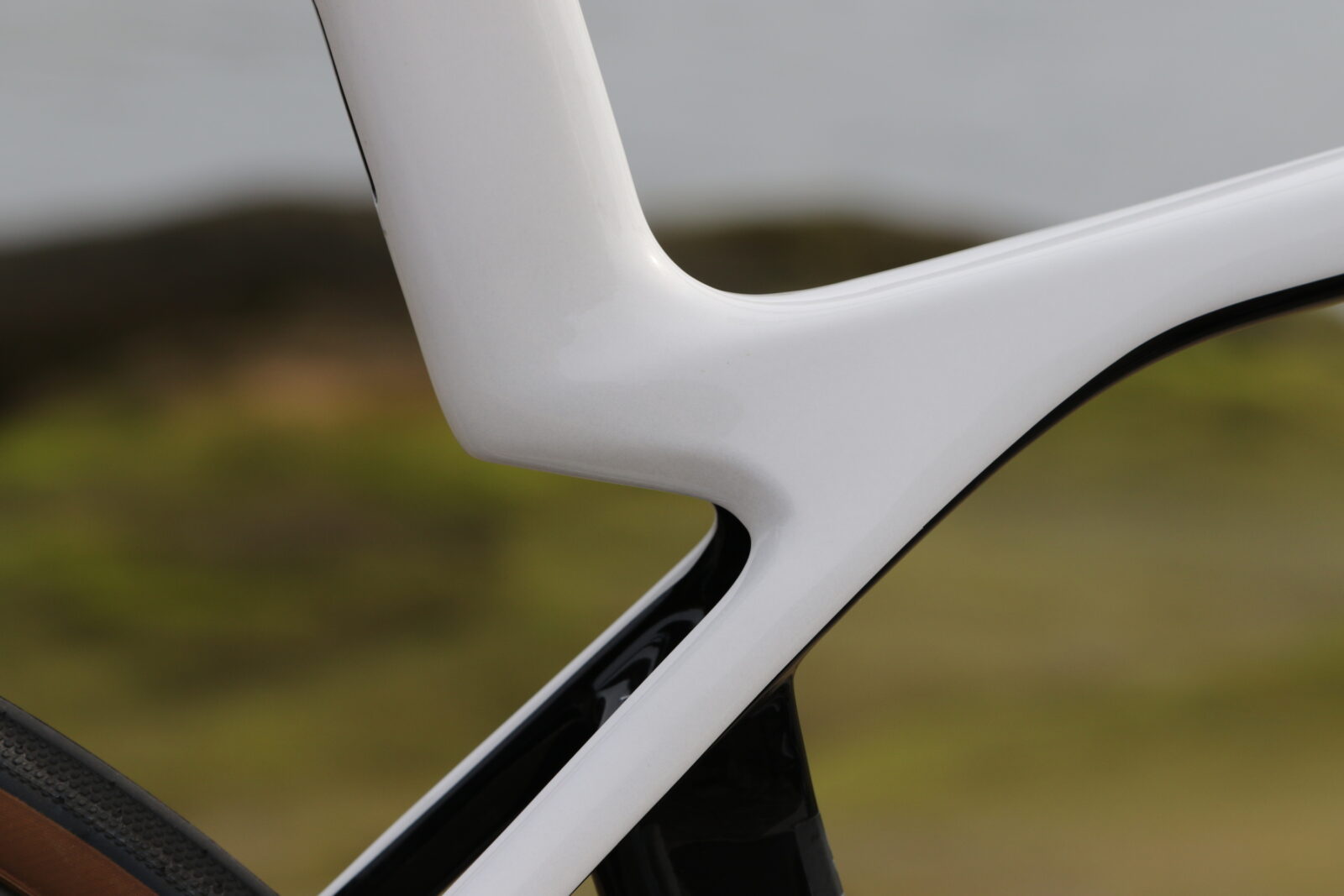
Specifications
Frame: 500 Series OCLV Carbon
Fork: Madone Gen 8 full carbon
Shifters: Shimano 105 R7170, 12-speed
Front derailleur: Shimano 105 R7150 Di2, braze-on, down swing
Rear derailleur: Shimano 105 R7150 Di2, 36T max cog
Cranks: Shimano 105 R7100, 50/34
Bottom bracket: Praxis, T47 threaded
Cassette: Shimano 105 7101, 11-34, 12-speed
Chain: Shimano SLX M7100, 12-speed
Wheels: Bontrager Aeolus Elite 35, OCLV Carbon, Tubeless Ready, 35 mm rim depth
Tyres: Bontrager R3 Hard-Case Lite, Tubeless Ready, 700×28 mm
Max tyre size: 32 mm
Saddle: Bontrager Aeolus Comp, steel rails, 155 mm width
Handlebar: Bontrager Comp, alloy, 31.8 mm
Stem: Trek RCS Pro
Brake rotor: Shimano RT70, CentreLock, 160 mm
Retail: $5,999.
Nicola Rutzou – a long-time contributor and, most recently, the editor of Bicycling Australia. Nicola is a keen Sydney-based road cyclist who writes reviews, news, and destination pieces, as well as the weekly e-newsletter for BA online.
